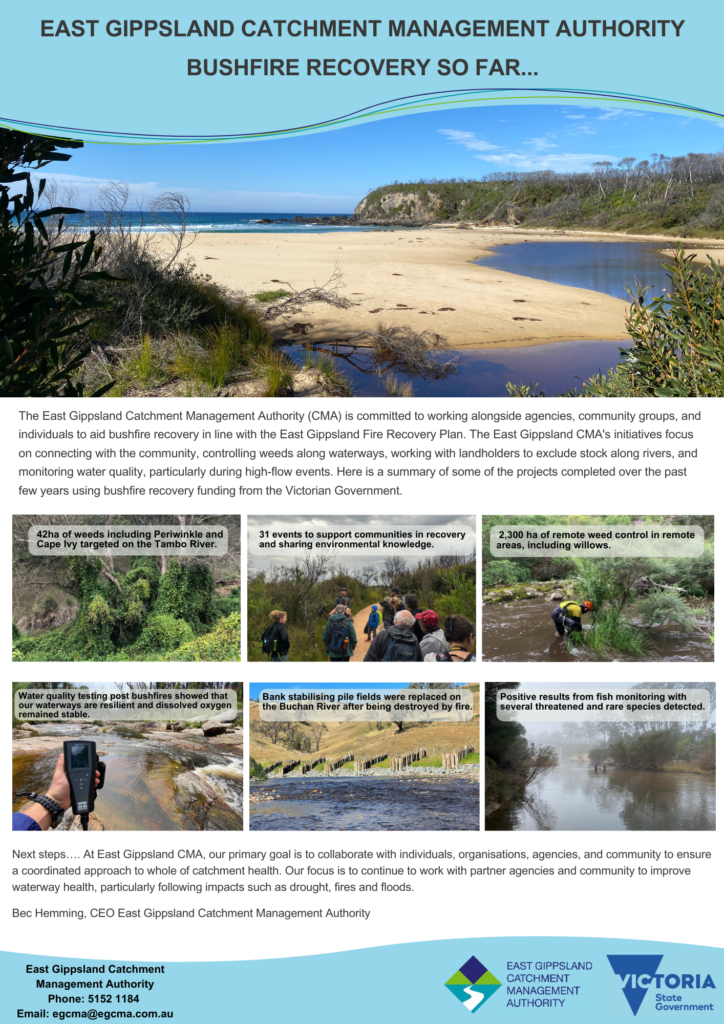
Significant efforts have been invested in bushfire recovery over the past three years, and more work is being done.
The East Gippsland Catchment Management Authority (CMA) continues to invest in bushfire recovery works in response to the 2019/20 bushfires.
Following bushfires, new weeds are expected to emerge, with weeds often being the first thing that grows following a disturbance. Last year, over 730ha of woody weed control was completed in fire-affected areas, and over 2,300ha have been treated since the bushfires.
Bec Hemming, East Gippsland CMA’s CEO said, “We have been working closely with Parks Victoria and the Department of Energy, Environment and Climate Action (DEECA) to tackle remote weeds, sharing projects and information to cover all areas of concern.”
The East Gippsland CMA had contractors working on the Tambo River, targeting weeds that have flourished since the bushfires. Weeds can outcompete the native species, spreading thickly and altering the natural landscape.
Two weeds on the hit list along the Tambo River included Cape Ivy and Blue Periwinkle. Both grow along the riverbanks, with Blue Periwinkle dominating the understory and excluding native species. Cape Ivy can climb up taller shrubs and trees, creating a vision of choking clumps as they grow up the host. Over 40ha of the Tambo River’s banks have so far been treated.
Whilst the weeds enjoyed the wetter seasons following the bushfires, so did many native plants and shrubs. On a stretch of the Tambo River where the weeds dominate, just a few kilometres away, multiple species of natives are growing successfully. Larger native species create the perfect canopy and safe place for smaller species to flourish. Over 15 species of native grasses, plants and trees were identified in one small section along the banks of the Tambo River.
Pioneer species, such as silver wattle, tend to grow quickly and in abundance following a fire. Still, this has advantages as they assist with soil stabilisation and creating habitat for birds and insects whilst other natives recover and grow.
“Remote weed control can be difficult to undertake, agencies and contractors work closely together to treat willows, broom, and blackberries in quite natural and remote areas.” Bec said.


